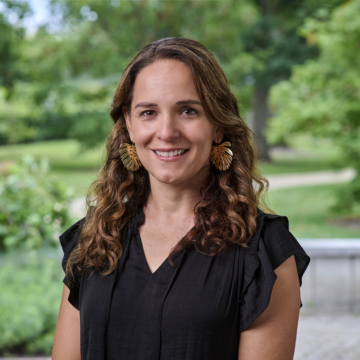As a senior scientist at The Morton Arboretum, Sean Hoban, PhD, leads the Tree Conservation Biology Research Group. Hoban and his team develop the knowledge and tools to strengthen conservation action for trees and ensure adaptive capacity and the resilience of biodiversity in a changing world.
Hoban’s research encompasses a broad spectrum of topics in conservation science, plant ecology, genomics, habitat management, and evolution. A central theme of his work is interpreting genetic and ecological data from trees—both in their natural habitats and in botanic gardens—to uncover insights relevant to monitoring, safeguarding and restoring tree biodiversity. By analyzing these data, he seeks to ‘look back in time’ to understand how forests have changed over the past and to translate this knowledge into actionable management strategies.
His research delves into topics such as population dynamics, species’ geographic ranges, and hybridization patterns, to gain better understanding of forest dynamics. His team has worked with several highly threatened oaks, magnolias, and cycads.
Another key focus of his work is ensuring the effective conservation of species in safehouses such as seed banks and living collections, including those at The Morton Arboretum. His research group employs computational modeling, GIS-based analyses, large-scale databases, and genetic approaches to safeguard the full spectrum of biodiversity. By integrating genetic, phenotypic, evolutionary, ecological, and horticultural data, they work to document and preserve biodiversity for future generations.
Hoban is also deeply engaged in bridging conservation research with both local and global policy. Since 2010, he has contributed to policy initiatives aimed at conserving biodiversity at all levels, designing and testing metrics for tracking biodiversity change, and strengthening capacity for biodiversity research and its applications. He is particularly passionate about translating scientific concepts into meaningful insights for policymakers, ensuring that research findings inform decision-making processes.
Additionally, his work extends to the development and refinement of statistical methods and software in conservation science, with an emphasis on real-world, scalable, and easy-to-use tools. He is committed to using these methods to summarize complex data in accessible ways, making scientific findings actionable, especially for use in conservation planning. Through these efforts, Hoban continues to advance the field of conservation science while fostering meaningful connections between research, management, and policy.
Hoban is also deeply committed to mentoring, fostering a welcoming and supportive research environment, and building collaborative and sustained partnerships.



